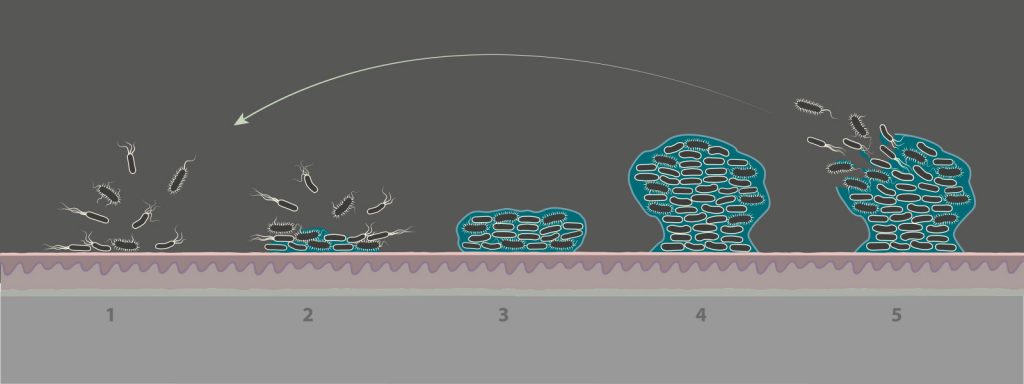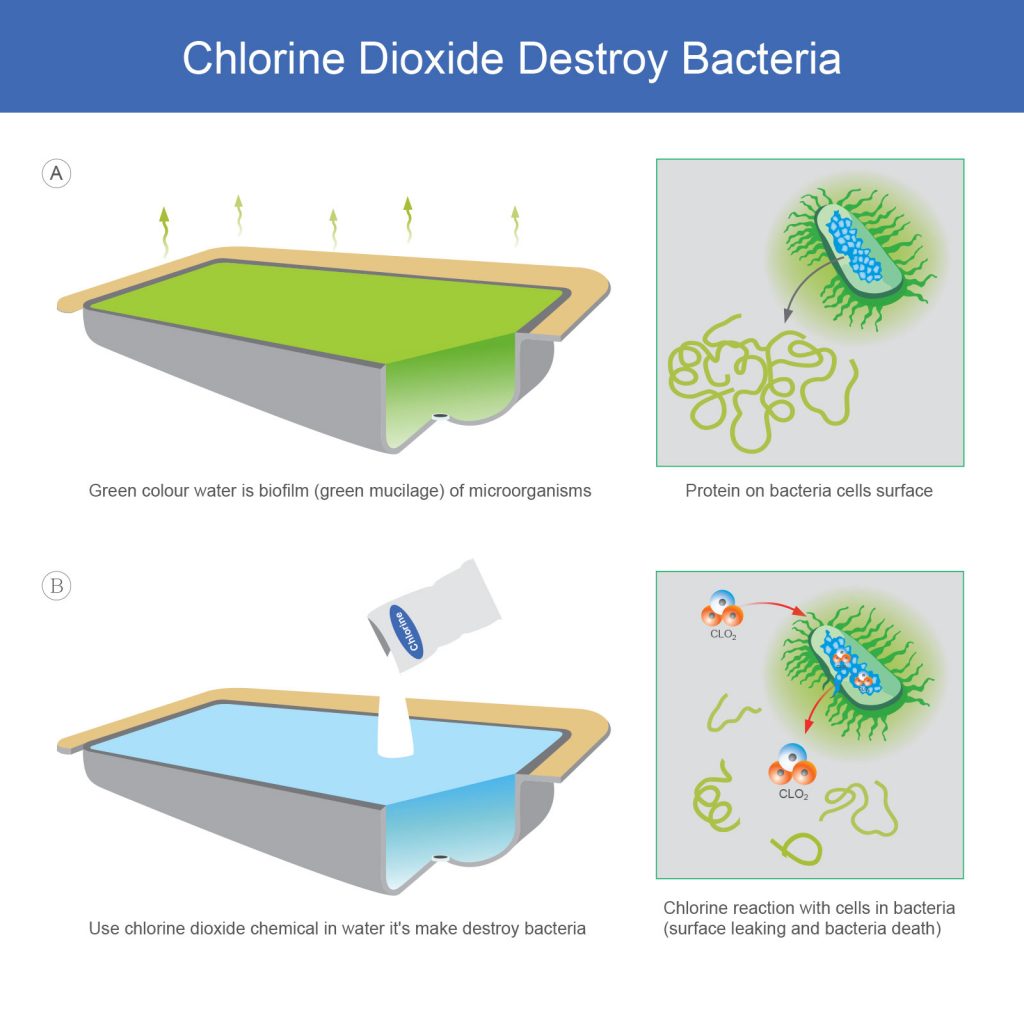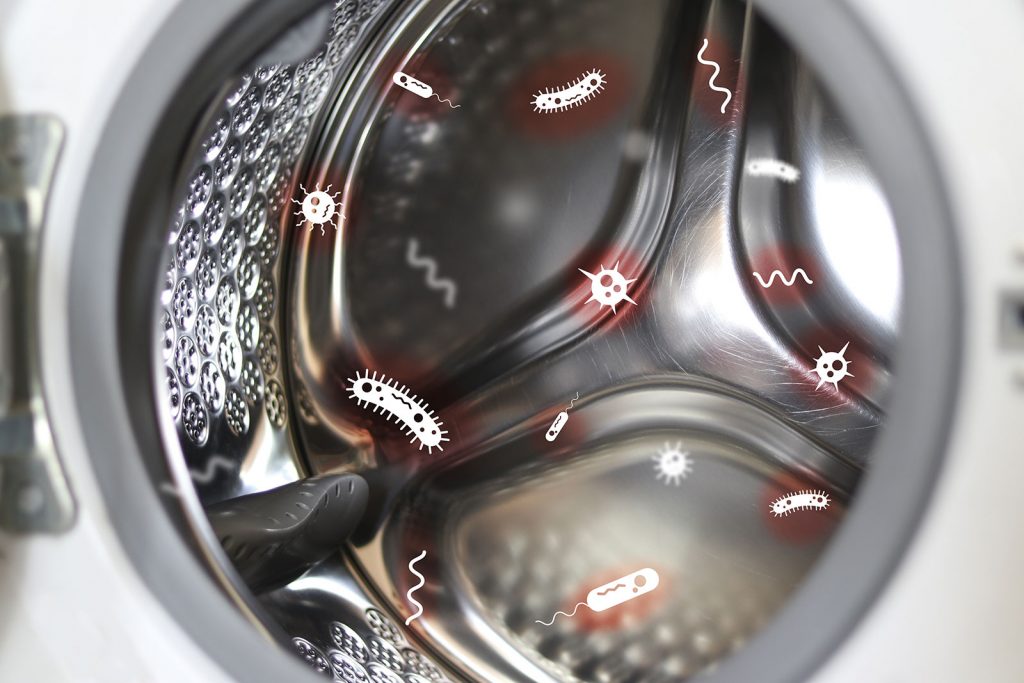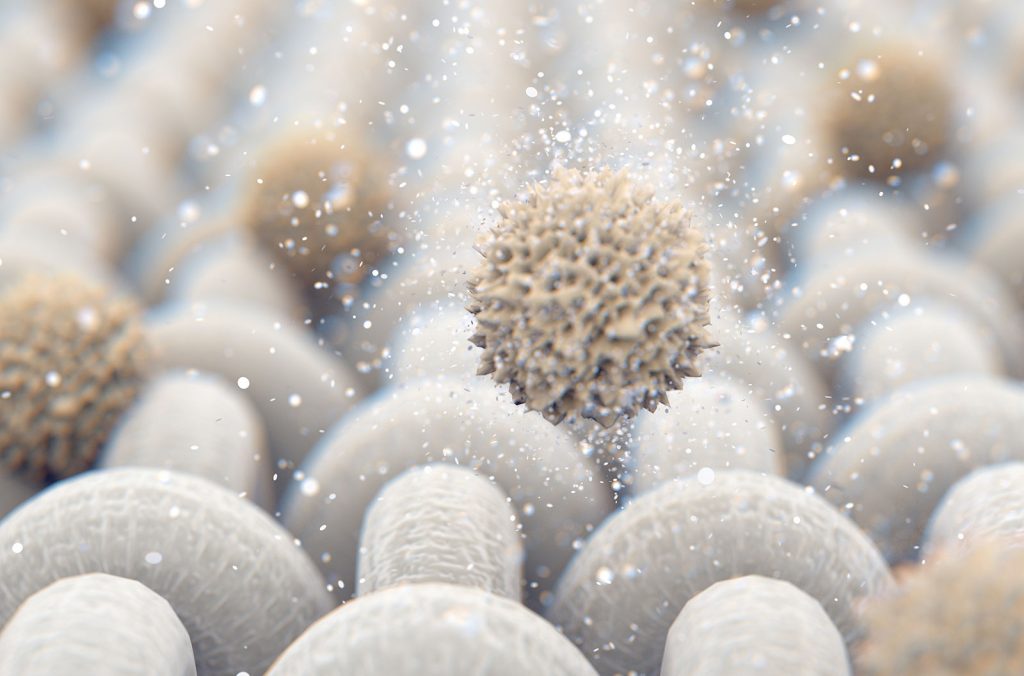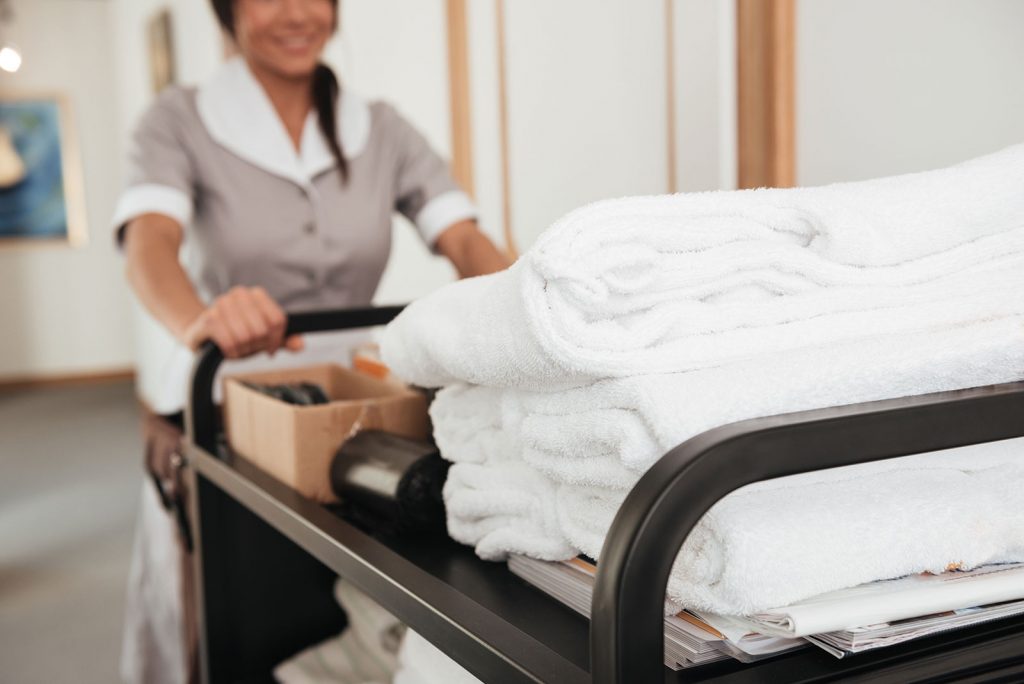Biofilm in Commercial Laundry
If someone said they wanted to talk to you about “biofilm,” would you know what they meant? If your industry handles large volumes of laundry or cleans guest/client hygiene areas (anywhere bio-material might be unnoticed for some time), you’re probably aware of biofilm. For everyone else: biofilm isn’t a movie about a real-life famous person (that’s a bioPIC). Merriam-Webster gives a straightforward definition of the term:
Biofilm: a thin usually resistant layer of micro-organisms (such as bacteria) that form on and coat various surfaces.
We’ll also add that the biofilm itself is essentially a protective excretion to shield microbe colonies living under the film. If you think that sounds gross, you’re not wrong. Let’s talk about different details of biofilm you may need to consider (or reconsider) if you’re in the hospitality industry.
Overview of Biofilm in the hospitality industry
Sticky. Slimy. Growing. Biofilm isn’t just unsightly to staff and guests (!), if you don’t notice it growing over time it can also feel mysterious when it seems to materialize out of nowhere. Not to worry! We’ll help bring you up to speed.
Consider the following as a very brief overview over biofilm:
- Biofilm involves colonies of micro-organisms that persist in areas that are often tricky to thoroughly clean. For example, commercial washing machines that wash dozens or hundreds of used linens every day/week. You can also find biofilm in bathroom toilets and showers.
- What happens if you pour salt into water and stir? The salt “vanishes.” But dissolved salt isn’t gone – you just can’t see it. Consider commercial laundry systems and the environmental need to reduce the fresh (not re-used) water used. Specialized cleaning products are necessary.
- Are biofilms dangerous? Apart from unsightly appearances, some biofilms are indeed dangerous to people (or pets). We won’t go into the details here, but some biofilms can lead to infections under certain circumstances – biofilm is made up of microbes like bacteria, after all.
Biofilm on inanimate surfaces
When we say “inanimate surfaces,” we just mean any surface that isn’t alive. For example, you may have encountered biofilm in the past when you went to a lake and stepped on a slimy rock. Biofilm can seriously grow almost anywhere!
The more you know what it looks like and where it can develop, the more you realize how significant an issue biofilm can become.
- Biofilm can occur wherever conditions allow microbes to flourish. This is especially true for used linens that get mixed and jumbled together from different sources, or when certain hard-to-reach areas of a bathroom are passed over in cleaning for any length of time.
- You may most frequently see biofilm manifesting as a sort of slimy, pink, scuzzy patch. In more diverse commercialized environments, biofilm may appear in different colors or even look transparent. Wherever you find biofilm, it should be properly cleaned and disinfected (we can help).
- Most commercial/industrial laundry systems rely on the ability to use the same water volume more than once. While this is super helpful for the environment, it does come with the increase chance of biofilm development. Don’t worry – we know why and what to do about it!
Biofilm creation on washing equipment
Every industry that involves cleaning anything in large scale will eventually have to wrestle against biofilm. This includes commercial or industrial laundry equipment.
Even if you’re utilizing the most advanced washing equipment, you’re going to need to understand how biofilm impacts your industry.
- Tunnel washers and process water tanks, while necessary for industrial laundry facilities, are susceptible to biofilm. As related industry technologies improve, the risk of biofilm development may decrease, but it is unlikely to ever disappear completely.
- If biofilm is not properly and quickly removed from scale in commercial laundry washers, it can quickly grow and spread. Though biofilm is composed of tiny micro-organisms, they can end up costing you a lot of money to remove. Proactivity is the most cost efficient!
- Biofilm development is inevitable. That’s why understanding the impact biofilms can have on a commercial laundry process is integral in avoiding possible transmission of bacterial infections. We have the tools and equipment you need to successfully combat biofilms.
Challenger Clean can create an effective cleaning plan for you.
Biofilm may seem ubiquitous, but that doesn’t mean it’s invincible. You can protect your equipment, services, and guests when you are prepared. Whether this is your intro to biofilm or your 100th battle, you are not powerless in the ongoing struggle for sanitation superiority!
Challenger Clean Systems are well-versed in the art of war against biofilm.
- First, a consistent, in-depth cleaning plan is the only way to safely and efficiently limit biofilm development and reducing costs of doing so over time. This includes a systematic and thorough cleaning of your equipment on a regular basis (yes, every internal and external surface and exposed part).
- Chlorine is an effective tool in combatting biofilm, but it is not sufficient on its own in proper cleaning schedules. Steam disinfection is an additional tool you may be able to utilize, sometimes even in lieu of chlorine (check with us and your equipment manufacturer).
- Cleaning techniques, technologies, and tenacity are your best allies in the ongoing war with biofilm. Preventative and proactive maintenance and cleaning is always going to be the safer, most cost-effective option for any commercial or industrial laundry service.
CONCLUSION
The whole concept of biofilm can be off-putting to many people. However, it is a battle that must be fought. So, as you consider your role in the war, consider what Sun Tzu wrote in The Art of War:
“If you know the enemy and know yourself, you need not fear the result of a hundred battles. If you know yourself but not the enemy, for every victory gained you will also suffer a defeat. If you know neither the enemy nor yourself, you will succumb in every battle.”
Even if you don’t know much about combatting biofilm, we do – take advantage of our authoritative stance in your industry and put Challenger Clean Systems to work for you. Contact us today.


